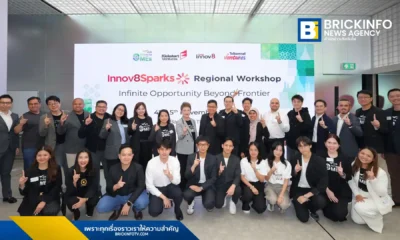Article
Understanding Idol Artists: A Journey from Japan to Thailand and Beyond

Brickinfo News Agency – Idol artists have become a significant part of Japanese pop culture, with names like Morning Musume and AKB48 gaining global recognition. But what exactly defines an idol artist, and how do they differ from conventional performers? At the recent NextWave Japan: Japan Pop Culture Marketing Forum in Thailand 2025, Ms. Nodoka Sakura, CEO of Tsugisute Inc., provided an inside look at the unique characteristics of this phenomenon.
What Separates an Idol from a Standard Artist?
According to Sakura, the key difference between idol artists and mainstream groups like Blackpink lies in the concept of fan engagement and the journey of the artist. Unlike traditional artists, idol artists allow fans to witness their growth from trainees to established performers.
This process is fostered by unique interaction methods, such as “2-Shot” photo sessions, meet-and-greet handshakes, and regular live performances. A hallmark of idol fan culture is the active participation during shows, often referred to as “yelling mix.”
The Origins of the Japanese Idol
The concept of idol artists has a long history, tracing back to the 1960s with the French film Cherchez l’idole. That make the word “Idol” gained popularity in Japan. In the 1970s and 80s, with idols performing primarily on television music shows.

However, as these shows declined in the 1990s, idols adapted, shifting their performances to smaller venues known as live houses. Until The Morning Musume group in the early 2000s revitalized the industry with a new focus on artist growth and development, paving the way for the modern era of idols.
The current landscape was largely shaped by the rise of AKB48 in 2010s, which later led to the creation of sister groups in Thailand, such as BNK48 and CGM48. This focus on personal connection and shared journey is what drives fan loyalty and, in turn, significant consumer spending.

The Financial Power of Idol Fandom
Sakura noted that a marketing survey revealed the average Japanese idol fan spends approximately $1,700 annually on idol-related products and events. This dedicated fanbase generates buzz and engagement at a lower cost than traditional marketing campaigns. In Thailand, one interesting business model is the Siamdol Cafe, which integrates idol artists with a dining experience, creating both revenue and a training ground for emerging talent.
Currently, Japan has approximately 1,000 active idol groups, with a strong presence in cities like Tokyo, Nagoya, and Osaka. Live performances can draw anywhere from 300 to 10,000 attendees.

Idols and Marketing Activities
Idol groups have also proven to be effective marketing tools. Sakura cited the example of Nagoya-based group Team Shachi‘s collaboration with a sushi chain. The partnership involved custom-designed plates, exclusive merchandise for fans, and in-store voiceovers by group members. This novel approach, initially planned for a single prefecture, expanded nationwide, demonstrating the broad appeal of idol-led marketing. Given the popularity of Thai idol groups like BNK48 and major events like Japan Expo Thailand, the use of idol artists for marketing in the country is poised for significant growth.
Brickinfo’s Role in the Thai Idol Scene
Brickinfo News Agency, which covers pop and subcultures, including the idol artist in Thailand, has been a long-time supporter of this creative industry. The agency has been involved in several projects aimed at fostering a creative ecosystem around idol culture.
To celebrate its 15th anniversary, Brickinfo hosted “The Exclusive Show,” which featured nearly 30 idol artists, including Yami Yami, Sumomo, and Mahou ran, along with artist Kaimook-Warattaya as the MC. The event highlighted the agency’s commitment to supporting new talent and promoting the growth of the idol industry in Thailand.















